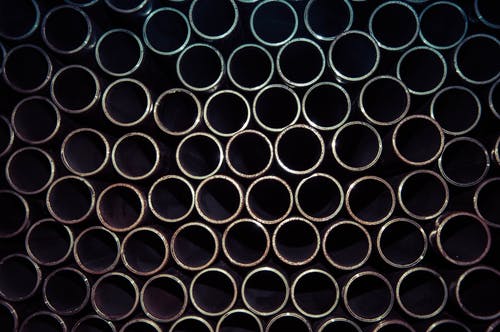The Most Widely Used Varieties of Steel
People have been looking for innovative ways to create, refine and utilize metallic materials since the bronze age. The variety of metals and grades permit applications and uses that are only limited by the human imagination. Metals have helped to advance the development and progress of our civilization and the world overall. They are the basis for many industries and the industrial revolution itself.
More than 80 different metals are utilized in the construction, maintenance, and manufacturing of the structures and objects we see daily. The five types of steel are listed as follows among those most extensively utilized worldwide. We’ve looked at some of their numerous applications and have provided some background information on each type of metal.
What exactly is steel?
Steel is an alloy of iron that has been enhanced by 1% carbon that generally does not contain the residues and impurities found in iron. While iron is stronger than other metals, it’s heavy, dense, and corrosive. Due to these aspects, in the end, iron structures can be challenging to construct and maintain. Adding carbon to iron helps mitigate these weaknesses and strengthens the iron.
Furthermore, steel has a relatively high strength-to-weight ratio compared to other metals, allowing for the creation of smaller but durable steel components. Steel is the most commonly used from facilities like Pipe bending and metal fabrication services, with more than 3500 different grades and an annual global production of nearly 2 billion tons. There are many kinds of steel due to the numerous components and the varying qualities of the elements added to steel alloys. Let’s explore the realm of steel without further ado.
Steel Alloy
Alloy steel is produced by mixing iron, chromium manganese, nickel, tungsten, or vanadium. Each alloying element contributes various properties to the mix, making alloy steel highly versatile. Based on the project’s requirements, the specific alloy can be altered to provide a variety of desired features, such as increased quality or strength or even a material that is more resistant to corrosion and wear. Because alloy steel is relatively affordable to manufacture, it is commonly used.
Stainless Steel
Stainless steel is a resisting corrosion alloy that is made up of iron, carbon as well as chromium, a large amount as well as other metal leftovers. It is a versatile metal that is used extensively for various household needs. Because stainless steel isn’t able to rust quickly, it is perfect for anything that comes into touch with food items, like kitchen appliances, tables, sinks, and various other furniture.
Carbon Steel
Carbon Steel is an alloy of carbon and iron with traces in other metallic elements. Based on the amount of carbon in the alloy, it’s typically classified into three groups (low, medium, moderate, or high carbon steel). The higher the proportion of carbon utilized in steel production, the stronger the alloy. However, smaller amounts of carbon make the alloy simpler to manufacture and cheaper to produce. Carbon steel is commonly utilized to create mechanical components and tools used at an industrial boiler service company. However, it is best recognized as a structural building material.
Tool Steel
Tool steel is used for cutting, drilling, and other shock-resistant tools due to its toughness. It is made more complex by alloying it with molybdenum, cobalt, tungsten, or vanadium. It is used in numerous industries, such as shipbuilding, construction turnaround services, and automotive. It is commonly used to machine and modify different types of steel.








